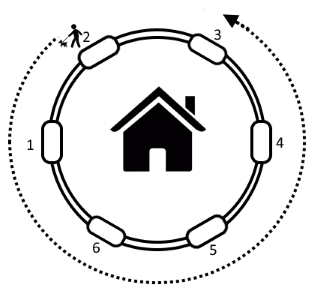A. Round House
Vasya lives in a round building, whose entrances are numbered sequentially by integers from 1 to n. Entrance n and entrance 1 are adjacent.
Today Vasya got bored and decided to take a walk in the yard. Vasya lives in entrance a and he decided that during his walk he will move around the house b entrances in the direction of increasing numbers (in this order entrance n should be followed by entrance 1). The negative value of b corresponds to moving |b| entrances in the order of decreasing numbers (in this order entrance 1 is followed by entrance n). If b = 0, then Vasya prefers to walk beside his entrance.

Illustration for n = 6, a = 2, b = - 5.
Help Vasya to determine the number of the entrance, near which he will be at the end of his walk.
Input
The single line of the input contains three space-separated integers n, a and b (1 ≤ n ≤ 100, 1 ≤ a ≤ n, - 100 ≤ b ≤ 100) — the number of entrances at Vasya's place, the number of his entrance and the length of his walk, respectively.
Output
Print a single integer k (1 ≤ k ≤ n) — the number of the entrance where Vasya will be at the end of his walk.
Input
6 2 -5
Output
3
AC代码:
1 #include<bits/stdc++.h> 2 3 using namespace std; 4 5 int main(){ 6 int n,a,b; 7 cin>>n>>a>>b; 8 if(n==1){ 9 cout<<1;return 0; 10 } 11 if(b>=0){ 12 if((a+b)%n==0){ 13 cout<<n;return 0; 14 } 15 cout<<(a+b)%n; 16 return 0; 17 } 18 int ans=(a+n-abs(b)%n)%n; 19 if(ans==0){ 20 cout<<n; 21 }else 22 cout<<ans; 23 return 0; 24 } 25 /* 26 100 1 -1 27 */